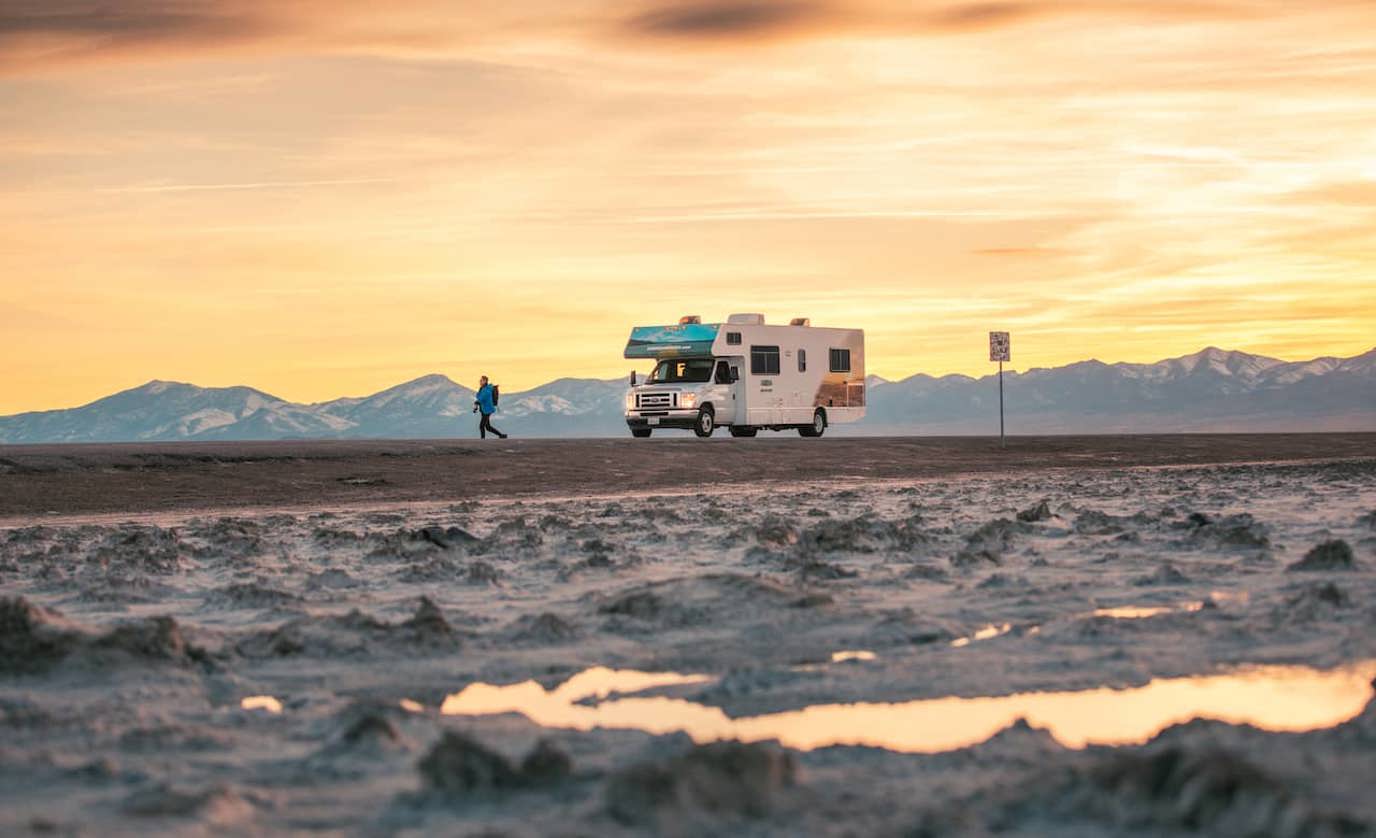
There are many reasons people transition to living in their RV full-time: freedom and flexibility, to travel, because they work remotely and don’t necessarily need to have a “home base,” to downsize, or to save money. Whether you’re trying to determine if going full-time is realistic for you (even temporarily) or you’re genuinely just curious, it’s common to wonder how much does RV living cost, really?
We’ve broken down some of the major costs to answer that question, but one important thing to keep in mind is that the average costs vary quite a bit from person to person. For example, a family will have far more everyday expenses than a solo traveler, while campers who enjoy boondocking won’t spend nearly as much every month as those who prefer to stay in RV parks.
With that in mind, let’s take a look at some real-life RV living full-time cost considerations.
How Much Does RV Living Cost? Considerations To Make
Fuel
Fuel is unquestionably one of the biggest expenses when it comes to RV living full-time cost calculations. However, it’s not a set cost, which can make estimating it long-term somewhat tricky. Someone driving cross-country or on the go for months at a time will spend considerably more than someone who stays in one area longer-term and explores mostly in a small radius from camp. Fuel prices also vary drastically between areas, which can also make it difficult to estimate an average cost.
Using road trip apps such as RV Trip Wizard or Roadtrippers can help roughly estimate the total cost of a trip based on distance, location, and current fuel prices, and GasBuddy can help you find the lowest fuel prices along your route.
Propane
Many RVs also have propane onboard, used for cooking, heating, or both. Tank sizes vary tremendously, but this is another cost that you should factor in when determining the cost of full-time RV living.
Campsites & Parking
Another major expense when considering how much does RV living costs is campsites and/or parking. After all, you need a place to safely and legally park your rig every single night.
These costs vary significantly, ranging from free to well over $100 a night for luxury campgrounds, but there’s good news. First, these costs are predictable — you can look up campsites ahead of time and know the exact price, then budget and plan accordingly. Also, unlike the cost of fuel, you have a great deal of control over what you spend on camping in your RV.
You can boondock or dry camp for free most of the time and only occasionally splurge on an actual campsite or RV park, or, at the opposite end of the spectrum, you can rent a long-term spot at an RV park. Many campgrounds and RV parks offer weekly or monthly discounts, and often, the longer you stay, the larger the discount.
One thing to remember when budgeting for your RV living full-time cost is that having access to electricity, restrooms, laundry, and cable or internet comes with additional costs. Full-hookup sites almost always cost more than those without, and if you stay somewhere long-term, you may actually be required to pay utilities. This is especially important to know for anyone considering full-time RV life as a way to save money.
To offer some examples, one family of five spent $1,656 on camping costs during a seven-week California coast trip in their 35-foot motorhome, moving around every couple of days. A Salt Lake City RV park charges $835 per month for a site that includes electricity, internet, cable, and even some additional perks like a storage shed, a temporary mailbox, and an extra parking space.
Campground Memberships
If you’re interested in staying at proper campgrounds fairly regularly, a campground membership or “RV club” is a worthy investment. Memberships such as Passport America, Good Sam, and Harvest Hosts come with a small upfront cost but get you significant discounts at thousands of campgrounds, plus on some RV gear and services.
Maintenance
Vehicle maintenance, both preventive and necessary, is another RV living cost to factor in. The more you drive, the more maintenance will be required, and the year, model, and type of RV (do you have a coach that you drive, or do you tow a trailer?) all play a role, so this is another variable cost. As a baseline, a recent Experian survey found that full-time RVers spent an average of $1,410 on routine maintenance in one year.
Things will inevitably break and need to be repaired or replaced, but you can try to minimize these expenses with preventive maintenance. Stay on top of routine oil changes, keep fluid levels topped off, and do regular visual inspections. It’s also a good idea to have an emergency repair fund so that when something unexpectedly needs to be fixed, you don’t have to eat into your daily budget.
Tips for Minimizing RV Living Full-Time Cost
The great news is that there are numerous ways to reduce the cost of living in your RV full-time.
- Consider investing in solar panels and upgrading your RV’s batteries so you’ll be self-sufficient and won’t need to rely on regular hookups
- Take advantage of boondocking as often as possible
- Sign up for at least one RV club membership
- Stay on top of preventive vehicle maintenance to optimize fuel economy and prevent any unexpected repair costs
Cruise America Has You Covered
Follow along for more RV lifestyle articles from Cruise America. Looking to buy an RV? We’ve got you covered there too. We offer a wide selection of pre-loved RVs that is sure to have just what you’re looking for. Contact us today or visit our website for more information.





